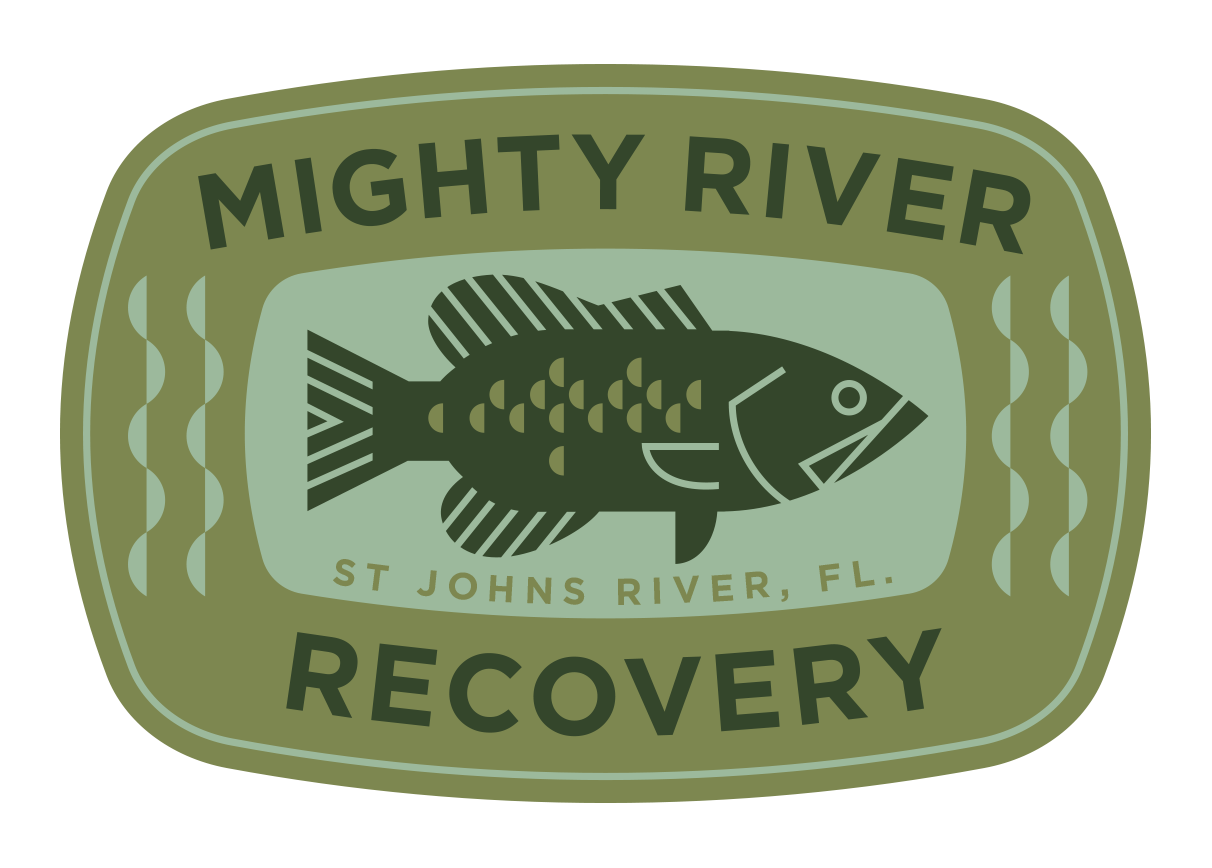We’re Creating the Problem.
Nutrients need someplace to go.
The most complex systems in nature can always be broken down into simple components. This concept is known as a food web.
Essentially, a food web defines the interaction within a natural community. What eats what, and how energy is transferred.
On planet earth, food webs start with plants. Plants utilize photosynthesis to produce glucose, the first cycle of energy. Other organisms convert and utilize that energy, feed more members of the community, and the cycle multiplies. But it all starts with plants.
The same holds true in our aquatic world, including the St. Johns River. Here, the smallest plants start the process. Algae are a form of phytoplankton (tiny organisms utilizing photosynthesis) and feed larger creatures. Those then feed tiny fish, invertebrates, insect larvae and more. Even in the water, it all starts with plants.
St. Johns River plant community
Some larger plants also feed animals directly. Think of a manatee chomping on floating pennywort, or a blue crab munching eelgrass. For the most part, though, the smallest algae begin the food web. Nothing can live without it.
The amount of this building material is dependent on nutrients and sunlight. Florida has plenty of both, allowing for sufficient growth of algae in most waters. Nutrient levels can get out of hand, though, resulting in algae blooms that can be detrimental to our waterways. Red tides, and suffocating blue-green algae blooms are examples we see in the news.
In early Florida, the food web was in balance. Our lakes and rivers contained adequate levels of plankton to feed the smallest members of the community. Larger plants also took up nutrients, providing vital habitat for frogs, fish, birds and more. Balance is always the key.
However, as we’ve altered the Florida landscape, we’ve thrown off that synergy.
Nutrient levels have increased dramatically in nearly all of our waterways. At Mighty River Recovery, we regularly review scientific studies from waterbodies all over the state and - without fail - they nearly all report highly-elevated nutrient levels.
Those nutrients need to go someplace. Just like adding fertilizer to your garden, nature responds by attempting to grow plants. Often, though, those plants don’t fit correctly into the plan.
“At Mighty River Recovery, we regularly review scientific studies from waterbodies all over the state and - without fail - they nearly all report highly-elevated nutrient levels. ”
Exotic, invasive species inhabit most Florida waterways, and they grow well with today’s increased nutrients. Water hyacinth and hydrilla are two we hear about most, with plans by area managers to eradicate these species at all costs. This eradication is actually written into the Florida Statute. The idea is that only plants native to Florida are suited to the needs of our waters.
Sure, native plants are preferred. However, hydrilla and other invasive plants provide outstanding habitat for fish and wildlife. And here’s the real kicker: once eliminated, what we’re often left with is a waterway that grows NO plants, other than algae.
Remember, all those nutrients need to go to something. So, when plants are killed - any plants - the nutrients remain, and are no longer being used. The result? Those nutrients grow more algae, often at levels toxic to fish and wildlife. Sometimes even humans.
The result of killing hydrilla
Booming algae and the floating organisms that feed on them cloud the water, leading to that ugly brown color we see in subdivision retention ponds. You know, those ponds that look nothing like natural Florida.
You may have noticed that ugly brown color - devoid of any plant species - becoming more commonplace throughout Florida, even on our natural systems. Over and over, more bodies of water are becoming darker and void of plants, especially plants rooted to the bottom.
This is due to algae blooms utilizing the over-charged nutrients and not allowing other plants to grow. Our meteoric human population growth, leading to huge increases in nutrients, causes this. Current management of our systems - destroying all invasive plants at any cost - magnifies it. And the cycle repeats.
The total loss of submerged plants in many areas of the St. Johns River is not a natural occurrence. It’s not the result of a hurricane, and the solution is not to continue on our current path and wait it out. The solution is to determine what’s needed to grow plants back. Plants so vital to fish and wildlife habitat, and the food web as a whole. Plants that - regardless if they’re exotic or not - can begin to use the elevated nutrients in our waterways and help to restore the balance.
Until we understand this principle, we’re just creating more retention ponds.
Mighty River Recovery is fighting for real-world solutions like these with the management community. Considering fish and wildlife - and all of us that like to interact with them - in an attempt to end the documented, long-term decline of the St. Johns River. Follow and join us to help spread the word.


